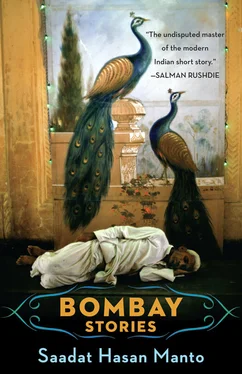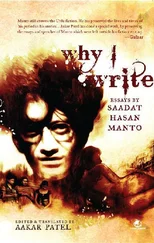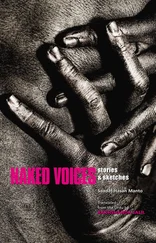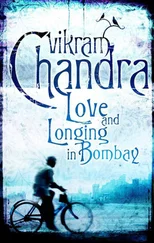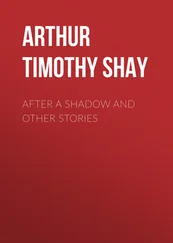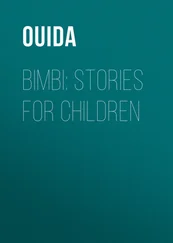Another striking feature of Bombay was its ethnic diversity. One gauge of this would be Manto’s enumerations of the ethnicities represented by prostitutes: in ‘Mammad Bhai’ he claims that there were prostitutes ‘of every sort — Jewish, Punjabi, Marathi, Kashmiri, Gujarati, Anglo-Indian, French, Chinese, Japanese.’ In the same story Manto mentions Arab pearl merchants and Chinese restaurateurs. 79Otherwise, in several stories there are Punjabis and Kashmiris; in ‘Khushiya’ the prostitute Kanta Kumari is from Mangalore, Karnataka. ‘Smell’ and ‘Mummy’ feature Anglo-Indians; ‘The Insult’ and ‘Rude’ mention people from south India. ‘Ten Rupees’ and ‘Mummy’ involve characters from Andhra Pradesh; Pathans from the Hindu Kush Mountains are mentioned in ‘Janaki.’ Mammad Bhai is from Rampur, Uttar Pradesh; and Sen, the murdered musician in ‘Mummy’, is Bengali.
Not only did people come from everywhere to live in Bombay, but people of all religions lived there together in relative harmony — from the Parsi descendants of Zoroastrian immigrants from Iran to Jews, Christians, Hindus, Sikhs, Jains, and Muslims; and this history of tolerance has a surprisingly long history. Christian history in Bombay began almost 500 years ago. The Portuguese were the first to come, and they worked up and down the western coast, with the Jesuits and the Franciscans competing for souls to convert. While the Jesuits were said to have won out in Dadar and Parel, the Franciscans fared better among the native fisher-folk in Mahim and Bombay. 80The architectural patrimony of Christianity in Bombay is old as well, as St Michael’s in Mahim, the oldest surviving church in the city, was built in 1534, the year the Portuguese acquired land from the Sultan of Gujarat. 81By the time the British took over, there were already Christians in the native population, and in 1674 the East India Company asked the British government to send over some good unmarried Anglican girls since the Company’s workers were breaking religious etiquette by marrying native Indian Catholics. 82
The history of the Parsi community is deep as well 83for they came as soon as the British, and their contributions — first as cloth merchants, then as shipwrights, 84and yet later as industrial barons and intellectuals — greatly aided the city on its rise to prominence. A Jewish community also existed in the city: 85the 1941 census showed more than 10,000 Jews living there, and the vast majority of these were the Bene Israel. 86Mozelle from the eponymous story in Bombay Stories is Jewish. Manto provides us with certain Indian Jewish stereotypes — namely, Mozelle’s traditional dress and wooden Sandals — but her licentiousness is clearly a fictional detail. Among the other communities, the Muslims ruled the area before the Western colonial intrusions, and Hindus of diverse types have lived in the area since perhaps time immemorial.
In only the last twenty years, Mumbai has increasingly become associated with communal violence, chiefly after the 1993 bombings and riots that seared the city and left 1,400 dead in the aftermath of the destruction of the Babri Mosque in Ayodhya, Uttar Pradesh. 87The first notable example of such violence came during an eight-day stretch in 1893 when riots broke out in reaction to Hindu — Muslim communal fighting in Saurashtra, Gujarat. Eighty people died (thirty-three Hindus, forty-six Muslims, and one Jew), and 700 people were wounded. 88
Riots erupted again in 1929, and yet these riots were not set off by religious acrimony; they began as a clash between striking workers of General Motors and a group of Pathan musclemen. 89Pathans were an intimidating physical lot — tall, broad-shouldered men wearing turbans and flowing gowns, their kurtas so long they nearly touched the ground. From the wild mountainous regions of the borderland between Afghanistan and Pakistan, they had well, deserved reputations for violence. In addition to working as henchmen for corporate powers, they also worked as small-time moneylenders. They arrived on payday at the factory gates to demand repayment on loans and were said to go so far as to demand sex from women who could not pay up. 90(Pathans figure in Bombay Stories several times. In ‘Mummy’, there is mention of a ‘bloodthirsty Pathan’ pressuring Chaddah to pay back a loan, and in ‘Why I Don’t Go to the Movies’, Manto mentions the ‘intimidating Pathan guard.’) A group of forty such Pathans were called in to break the workers’ strike. They descended upon the offices of the Girni Kamgar Union, the leading Communist labour union, but the violence soon got out of hand and turned along communal lines. In the clashes, 106 people died and over 600 were wounded, 91and in time these riots became known as the Pathan Riots.
Manto claims that he was twice witness to Hindu — Muslim violence during his first stint in Bombay (1936–41), 92and there is no reason to doubt him, as the years before independence saw increased violence of all sorts, including labour strikes in connection with the Quit India Movement. And yet it wasn’t until the communal violence of 1946–47 that Muslims thought to live separately for their safety. 93Manto left the city due in part to the growing tension that divided the city on religious lines, and yet even then the growing unease he felt was more a premonition for what the future would hold than it was a part of the city he knew and loved.
LITERARY CONTEXT
Salman Rushdie has described Manto as a writer of ‘low-life’ fictions, 94and this phrase helps explain why Manto had problems with government censorship and, to an extent, with many of his fellow writers. Rushdie’s comment points not only to the low social status of many — in fact the overwhelming majority — of Manto’s characters, but it also suggests the uncertain morals that many of these characters display. It was due to this second point that Manto found himself in conflict with the leading literary movement of India and Pakistan of the twentieth century, the Progressive Writers’ Movement.
The Progressive Writers’ Movement began in 1933 with the publication of the collection of short stories Burning Coals , 95as four young writers critical of the shape Indian literature was taking came together to argue for a new way of writing that was politically minded and sceptical of religion. The movement took its official identity the next year when two writers living in London, Sajjad Zahir and Mulk Raj Anand, founded the Progressive Writers’ Association, 96and when the All India Progressive Writers’ Association was established in 1936. 97Urdu writers joined the revolutionary spirit by initiating their own Urdu Progressive Writers’ Association, along with starting up the journal New Literature 98that would be the effective mouthpiece for their efforts. The UPWA’s first manifesto announced their intention that ‘we want the new literature of India to make its subject the fundamental problems of our life. These are the problems of hunger, poverty, social backwardness and slavery.’ In April 1939 in the first issue of New Literature , they again stated their position: ‘In our opinion, progressive literature is literature that trains its eye upon the realities of life, reflects them, investigates them and leads the way toward a new and better life.’ 99
Manto is considered a peripheral member of this movement. He did focus on the lower strata of South Asian society, and he was friends with many writers of the movement, most notably Krishan Chander and Ismat Chughtai. Nonetheless, the elite of the movement, both in India and later in Pakistan, often disapproved of Manto’s writing and sought to distance themselves from him. In the All India Urdu Congress in Hyderabad in 1944, Sajjad Zahir criticized Manto’s story ‘Smell’ for being obscene and for not having the reformatory intent that modern fiction should have. 100Literature was meant to be a vehicle for social uplift, and Manto’s stories often fell short of the ideals of the more doctrinaire: he portrayed society’s sordid aspects as they were and remained free from any ideological programme. Manto was too individualistic (and perhaps too egotistical) to belong to any movement that demanded absolute allegiance from its members; he was too interested in his own viewpoint to sacrifice anything for the good of any group. Manto made his own views known on the Progressive Writers’ Movement, and he wrote about them with bitter irony and sarcasm. Two examples include his story ‘Progressives’, 101a trenchant criticism of the movement’s pertinacity, and his satirical essay ‘A Progressive Cemetery’ 102that makes fun of the label ‘progressive’ by placing it in the context of the supposed advancements taking place in a Bombay cemetery.
Читать дальше
